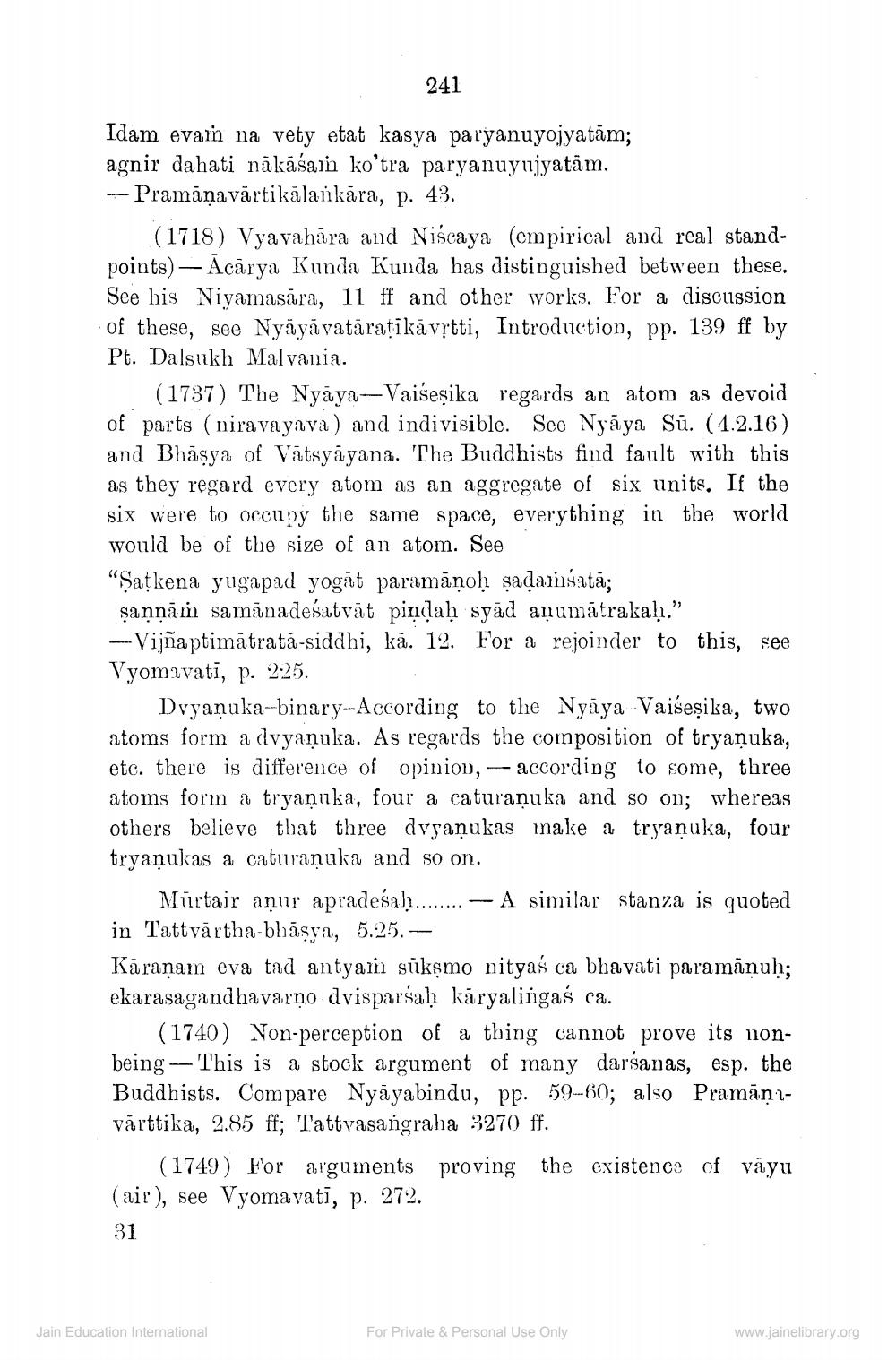________________
241
Idam evain na vety etat kasya paryanuyojyatām; agnir dahati nākāśain ko'tra paryanuyujyatām. --Pramāņavārtikālankāra, p. 43.
(1718) Vyavahāra and Niscaya (empirical and real standpoints) - Acarya Kunda Kunda has distinguished between these. See his Niyamasāra, 11 ff and other works. For a discussion of these, see Nyäyávatāratīkāvịtti, Introduction, pp. 139 ff by Pt. Dalsukh Malvania.
(1737) The Nyāya-Vaišeșika regards an atom as devoid of parts (niravayava) and indivisible. See Nyāya Sū. (4.2.16) and Bhāsya of Vatsyāyana. The Buddhists find fault with this as they regard every atom as an aggregate of six units. If the six were to occupy the same space, everything in the world would be of the size of an atom. See “Satkena yugapad yogāt paramāņoh șadarśatā;
şaņnām samanadeśatvāt pindah syad anumătrakah.” --Vijñaptimătrată-siddhi, kā. 12. For å rejoinder to this, see Vyomavati, p. 225.
Dvyaņuka--binary-According to the Nyāya Vaišeşika, two atoms form a dvyaņuka. As regards the composition of tryaņuka, etc. there is difference of opinion, - according to some, three atoms form a tryaņuka, four a caturaņuka and so on; whereas others believe that three dvyaņukas make a tryaņuka, four tryaņukas a caturaņuka and so on.
Murtair aņır apradeśah...... — A similar stanza is quoted in Tattvārtha-bhāsya, 5.25. - Kāraṇam eva tad antyam sūksmo nityaś ca bhavati paramāņuh; ekarasagandhavarno dvisparśah kāryalingaś ca.
(1740) Non-perception of a thing cannot prove its nonbeing -- This is a stock argument of many darśanas, esp. the Buddhists. Compare Nyāyabindu, pp. 59-60; also Pramānivārttika, 2.85 ff; Tattvasangraha 3270 ff.
(1749) For arguments proving the existence of väyu (air), see Vyomavatī, p. 272.
31
Jain Education International
For Private & Personal Use Only
www.jainelibrary.org




